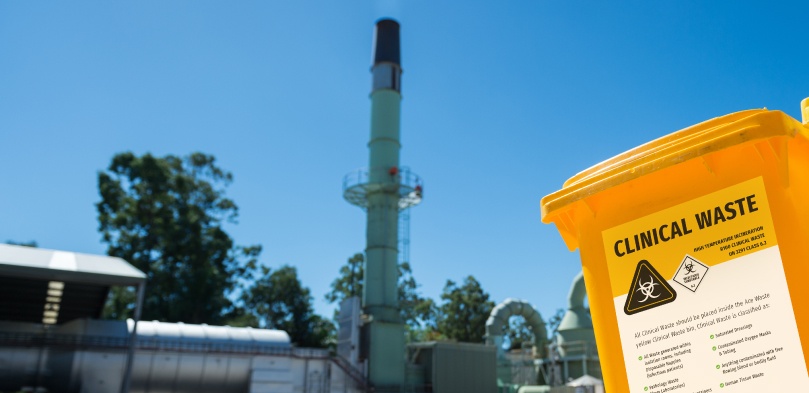Ace Waste’s Waste To Energy/Energy Recovery Strategy is formed using our extensive knowledge and the high calorific value (heat energy) inherent in various wastes to promote the combustion process. It provides the required energy to operate the Incineration Plant.
Incineration plants require natural gas to maintain combustion. However, with the Ace Waste Incineration plants, the clinical and related waste stream has enough energy. This is due to the high plastic content (approximately 30% plastic content) to maintain combustion conditions with minimal requirement for additional fuel. The rated calorific value of clinical waste is 28 MJ/Kg. By comparison, coal has around 32 MJ/kg energy. In fact, plastic has the same calorific value as natural gas at 46 MJ/Kg.
Not only is the clinical waste being environmentally and permanently destroyed, but the inherent energy in this waste stream is providing over 90% of the heat energy required to maintain combustion. Once the plant is operational the only inputs are clinical and high-value wastes and combustion air.
Waste To Energy Strategy
Ace Waste has commenced its Waste To Energy strategy. Our organisation intends to maintain current operating conditions by utilising the existing values in certain waste streams and materials to realise and capitalise on this important initiative.
With Clinical Waste providing the vital energy to maintain combustion, the incineration process generates significant heat energy. This is able to be harnessed to power various parts of the incinerator plant and equipment.
Ace Waste is currently assessing alternative technologies which have the advantage of harnessing some of the surplus heat energy. These in turn can operate a steam boiler/turbine/condenser system to create usable power. Resultant power will be sufficient to operate various parts of the incineration plant and fulfil our strategy of self-sufficiency.
All in all, High-Temperature Incineration provides long term sustainable advantages.


